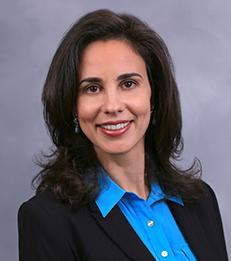Research Highlights
Open Innovation Model Furthers Innovation at NASA, According to NYU Stern Research
—


These findings come at a critical time when many of today’s professions are threatened by technological disruption.
First study to show the real success of the open innovation model depends on an identify shift
NYU Stern Professor NYU Stern Professor Hila Lifshitz-Assaf’s research paper “Dismantling Knowledge Boundaries at NASA: The Critical Role of Professional Identity in Open Innovation,” provides an in-depth analysis of a three-year crowdsourced innovation initiative at U.S. National Aeronautics and Space Administration (NASA). The study finds that web-enabled open innovation proves to significantly advance technological and scientific innovation, but only when a shift in both work process and professional identity takes place.
“These findings come at a critical time when many of today’s professions are threatened by technological disruption,” said Professor Lifshitz-Assaf.
“Truly innovative and implemented solutions rely on the ability of the professionals to go through a fascinating shift in their professional identities – zooming out of their current ‘how’ and refocusing on the ‘why’. In the case of NASA’s scientists and engineers, the shift was best from being ‘problem solver’ to ‘solution seeker’. As some people described it, it is a shift from thinking ‘the lab is my world’ to ‘the world is my lab’!”
The paper examines the results of an in-depth, three-year study conducted at the NASA in which NYU Stern Professor Lifshitz-Assaf evaluated a strategic experiment conducted with open-innovation methods on multiple challenging scientific and technological problems NASA was facing. The experiment produced groundbreaking discoveries, while simultaneously raising many tensions among the R&D professionals, scientists and engineers.
Lifshitz-Assaf explained, “This is the first time we have had a close look at the deep challenges involved with open innovation and how to overcome them.”
One success story featured in the study involved the prediction of solar particle events – popularly known as solar storms which are extremely dangerous to space missions. A severe solar storm could lead to what is known as ‘‘the ultimate blackout’’. This well-known and challenging scientific problem was posted on Innocentive as a challenge for an algorithm that could predict an event from four to 24 hours in advance with a $30,000 reward.
The winning submission came from a semiretired radio engineer from rural New Hampshire which challenged the boundaries of the knowledge work in this field, using an approach that was completely outside the heliophysics discipline and tradition. Professor Lifshitz-Assaf continued, “This study raises the question – in the digital age, should we still be organizing innovation in organizations?
This research offers implications for innovation processes and policy, as training, resource allocation and award systems today are tailored towards problem solvers rather than solution-seekers.
